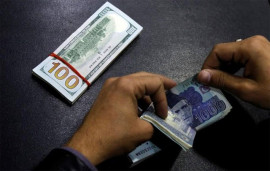
The State Bank of Pakistan (SBP) abruptly allowed the rupee to lose 4% against the dollar, with the rupee ending at Rs115 in the inter-bank market on Tuesday. This was the second spell of depreciation in a short span of three months. Earlier, in December 2017, the rupee lost around 5% to become Rs110.64 to the greenback and stayed at the level for the last few months.
Pakistanis likely to bring back $5 billion under amnesty scheme
Stakeholders, including importers and exporters, largely found it a wise decision to depreciate the rupee in a bit to increase exports and remittances, which should one way or the other play their role in controlling the twin deficits and slow down the decrease in foreign exchange reserves.
At the same time, they foresaw its negative impact on the internal economy. The depreciation would increase the import bill, petrol prices, utility tariffs, cost of doing business and transportation, and convince the central bank to increase key interest rate as a remedy to deal with increased inflation.
Pakistan Business Council (PBC) CEO Ehsan Malik said “overall, it (rupee-dollar parity) is moving in the right direction…it was a wise decision to gradually depreciate the rupee by Rs4-5 against the US dollar each time instead of doing it in one go.”
He said the depreciation was expected as the International Monetary Fund (IMF) has been lobbying for it.
He said it would help in increasing exports as happened in the post-December depreciation event. However, it would not significantly slow down imports, he added.
“Rupee devaluation may also result in increased inflation, forcing the central bank to increase the key interest rate by 0.5% to deal with the likely situation,” he said.
Worrying economic indicators keep investors jittery
Textile bigger beneficiary
Sherman Securities said in its note that the rupee’s depreciation against the greenback would largely benefit textile exports which account for around 60% of the total exports of the country.
“Besides, it would also help oil and gas exploration and production firms, petroleum refineries and some independent power producers to benefit since they are guaranteed returns in US dollars by the government,” the report stated.
The benefit was on full display at the country’s stock market on Tuesday with the textile, oil and exploration sectors, as well has banks taking the KSE-100 Index 1.8% higher.
Published in The Express Tribune, March 21st, 2018.
Like Business on Facebook, follow @TribuneBiz on Twitter to stay informed and join in the conversation.


































1714024018-0/ModiLara-(1)1714024018-0-270x192.webp)









COMMENTS (1)
Comments are moderated and generally will be posted if they are on-topic and not abusive.
For more information, please see our Comments FAQ